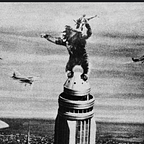Psychedelic Solution
Part two:
Hierarchy
All primates self-organize into hierarchies. To what extent and degree of inflexibility is determined by level of evolutionary development (size of the frontal lobe and environmental influences). Capuchin monkeys have a far more rigid hierarchical system than chimps, and bonobos have a far less rigid system of hierarchy than chimps. As social animals, primates rely on hierarchy to organize to gather resources, fend off threats from predators, and to chase away competition. Hierarchy is also used to ensure only those with the most brute strength, ability to connive, and fierceness are able to mate. Hierarchy also ensures that those same upper echelon primates are entitled to the best selection of resources gathered by the lower echelon primates.
Primate hierarchy is very basic. At the top is a patriarch, the alpha (who has proven themselves to be the boldest, fiercest, most cunning, etc.). Below the alpha in descending ranks of social status are the rest of the tribe. At the top is the alpha who reigns supreme (until toppled), followed by enforcer monkeys/apes, with a lowly caste of resource gatherers at the bottom (worker monkeys/apes).
In Frans de Waal’s documentary of Chimpanzee politics, he documented the day to day interactions of a chimpanzee tribe. An island matching the natural habitat of chimpanzees, surrounded by a moat, was observed behind a tree line which concealed the outside world. This was done in the effort to reproduce as accurately as possible the chimpanzees…
